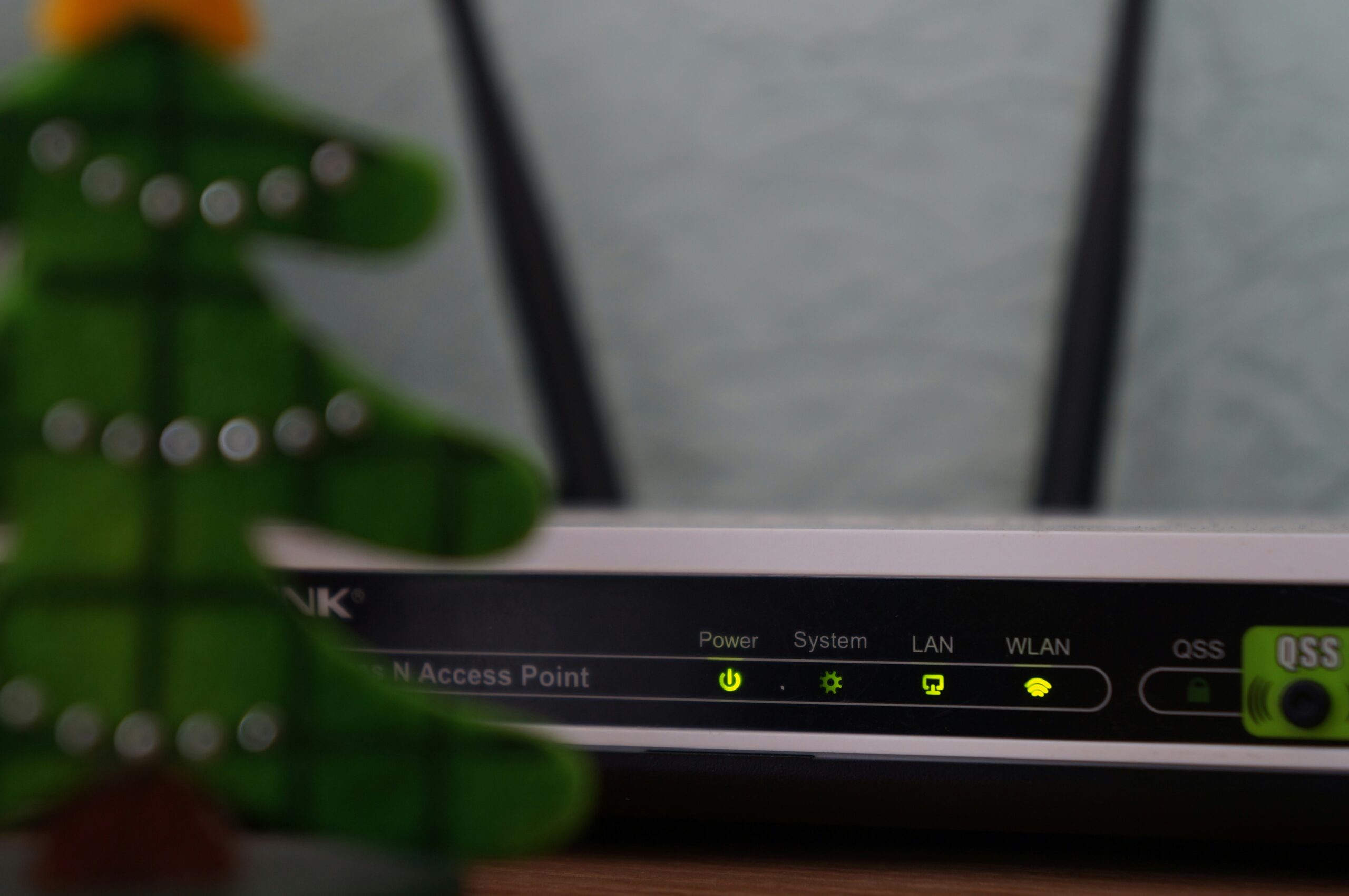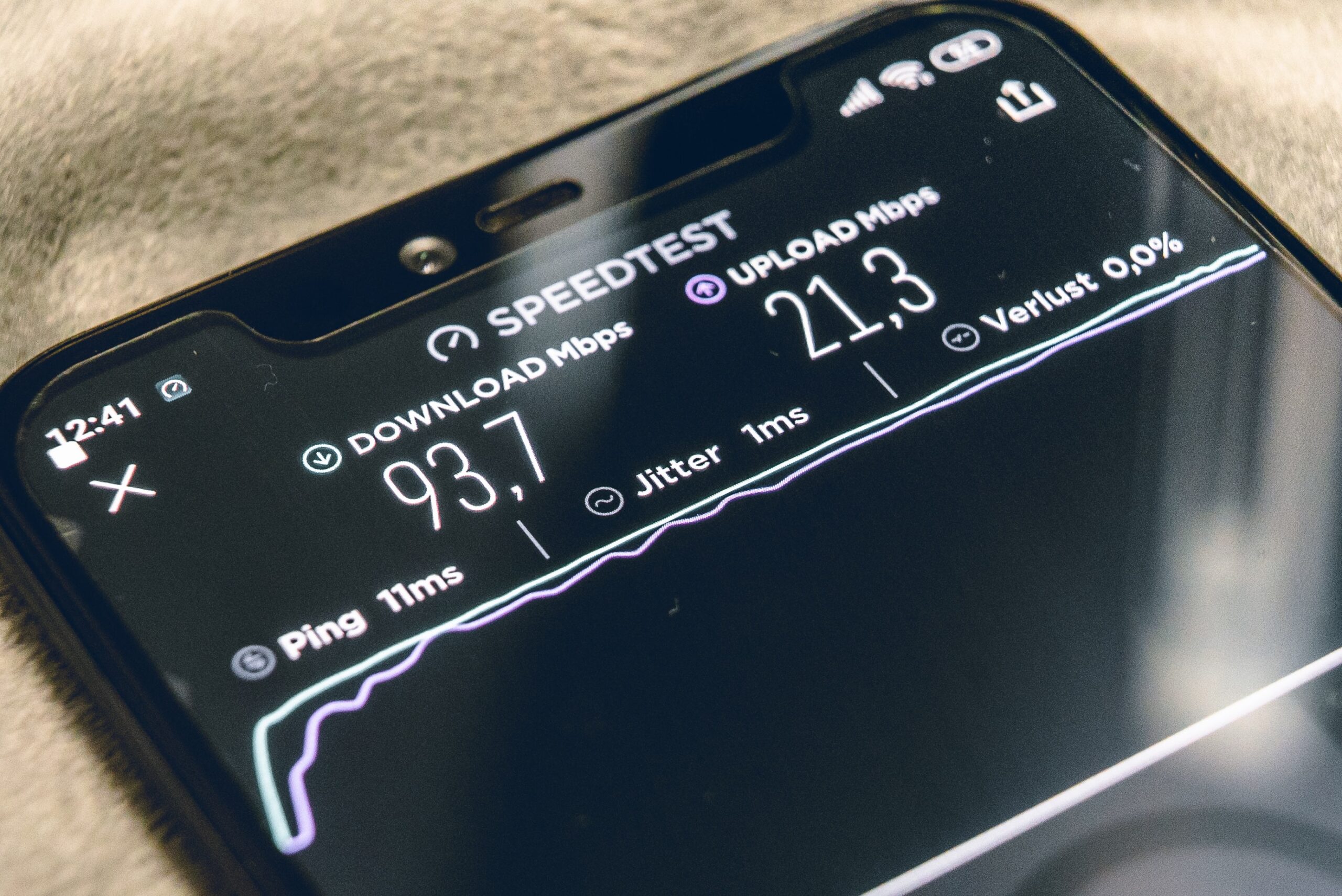In today’s connected world, reliable WiFi is essential for almost every aspect of daily life, from work and education to entertainment and smart home management. However, many people struggle with poor WiFi coverage, dead zones, and slow speeds that disrupt their online activities. Extending WiFi range and eliminating dead zones can significantly improve your internet experience. This comprehensive guide explores various methods and technologies to extend WiFi range and enhance coverage, ensuring seamless connectivity throughout your home or office. We will delve into detailed explanations, product reviews, frequently asked questions, and practical tips to help you achieve optimal WiFi performance.
Understanding WiFi and Its Limitations
What is WiFi?
WiFi, short for Wireless Fidelity, is a technology that allows devices to connect to the internet and communicate wirelessly within a local area network (LAN). WiFi operates using radio frequency signals to transmit data between devices such as routers, computers, smartphones, and smart home devices. This technology is based on the IEEE 802.11 standards, which have evolved over time to provide faster speeds and greater coverage.
Common WiFi Issues
Despite its convenience, WiFi is not without its challenges. Some common WiFi issues include:
Dead Zones
Dead zones are areas within a home or office where the WiFi signal is weak or non-existent. These areas often result from physical obstructions, interference, or the distance from the WiFi router.
Slow Speeds
Slow WiFi speeds can be caused by various factors, including network congestion, outdated equipment, interference, or a weak signal. Slow speeds can impact streaming, gaming, and other bandwidth-intensive activities.
Interference
Interference from other electronic devices, neighboring WiFi networks, or physical obstructions can degrade WiFi performance. Common sources of interference include microwaves, cordless phones, Bluetooth devices, and walls or floors made of certain materials.
Limited Range
The range of a WiFi network is limited by the power and capabilities of the router. Large homes or offices may experience coverage gaps due to the distance between the router and connected devices.
Understanding WiFi Frequencies and Bands
WiFi networks operate on different frequency bands, each with its advantages and limitations. Understanding these bands is crucial for optimizing WiFi performance.
2.4 GHz Band
The 2.4 GHz band is widely used and offers good range and penetration through walls and obstacles. However, it is more prone to interference and congestion due to its popularity and limited channels.
5 GHz Band
The 5 GHz band provides faster speeds and less interference compared to the 2.4 GHz band. However, its range is shorter, and it does not penetrate obstacles as effectively. Modern routers often support both 2.4 GHz and 5 GHz bands, allowing devices to switch between them for optimal performance.
WiFi 6 (802.11ax)
WiFi 6 is the latest WiFi standard, offering significant improvements in speed, efficiency, and capacity. It operates on both 2.4 GHz and 5 GHz bands and introduces new technologies such as MU-MIMO, OFDMA, and Target Wake Time to enhance performance and reduce congestion.
Methods to Extend WiFi Range and Eliminate Dead Zones
There are several methods to extend WiFi range and eliminate dead zones, each with its benefits and considerations. Understanding these methods will help you choose the best solution for your needs.
1. Optimizing Router Placement
The placement of your WiFi router plays a crucial role in determining the range and coverage of your network. Follow these tips to optimize router placement:
Central Location
Place the router in a central location within your home or office to ensure even coverage in all directions. Avoid placing the router in corners, basements, or enclosed spaces.
Elevated Position
Position the router at an elevated height, such as on a shelf or mounted on a wall, to reduce interference from furniture and other obstacles.
Avoid Obstructions
Keep the router away from large metal objects, thick walls, and electronic devices that can cause interference. Ensure there are minimal physical obstructions between the router and connected devices.
2. Upgrading Your Router
An outdated router may not provide the best performance and coverage. Upgrading to a modern router with advanced features can significantly improve WiFi range and speed.
WiFi 6 Routers
WiFi 6 routers offer enhanced performance, faster speeds, and better coverage compared to older WiFi standards. They are ideal for homes with multiple devices and high bandwidth requirements.
Mesh WiFi Systems
Mesh WiFi systems consist of multiple nodes or satellites that work together to provide seamless coverage throughout your home. They eliminate dead zones and ensure a strong signal in every corner.
High-Gain Antennas
Routers with high-gain antennas can transmit signals over longer distances and penetrate obstacles more effectively. Consider routers with external, adjustable antennas for better coverage.
3. Using WiFi Extenders and Boosters
WiFi extenders and boosters are devices that amplify and extend the range of your existing WiFi network. They are an affordable and easy solution to eliminate dead zones.
WiFi Extenders
WiFi extenders, also known as repeaters, receive the existing WiFi signal and rebroadcast it to cover a larger area. They are placed between the router and the area with weak coverage to extend the signal.
WiFi Boosters
WiFi boosters amplify the existing WiFi signal to improve its strength and range. They are typically plugged into an electrical outlet and positioned in areas with weak signals.
4. Implementing Powerline Adapters
Powerline adapters use your home’s electrical wiring to transmit data, effectively extending your network without the need for additional cabling. They are an excellent solution for homes with thick walls or multiple floors.
How Powerline Adapters Work
Powerline adapters come in pairs and are plugged into electrical outlets. One adapter is connected to the router, and the other is placed in the area with weak coverage. They communicate through the electrical wiring, providing a stable and reliable connection.
Advantages of Powerline Adapters
Powerline adapters are easy to set up, provide a stable connection, and can extend the network to areas where WiFi signals are weak. They are also less prone to interference compared to wireless solutions.
5. Utilizing Wired Connections
In some cases, using wired connections can provide a more reliable and faster network experience. Ethernet cables can be used to connect devices directly to the router or network switches.
Ethernet Cables
Running Ethernet cables to key areas in your home or office can ensure a stable and high-speed connection for bandwidth-intensive activities such as gaming, streaming, or video conferencing.
Network Switches
Network switches can be used to expand the number of wired connections available in your network. They are ideal for connecting multiple devices in a central location, such as a home office or entertainment center.
6. Adjusting Router Settings
Adjusting the settings on your router can optimize its performance and extend the WiFi range. Accessing the router’s web interface allows you to make various adjustments.
Changing WiFi Channels
Switching to a less congested WiFi channel can reduce interference and improve performance. Use a WiFi analyzer tool to identify the best channel for your network.
Enabling Quality of Service (QoS)
QoS settings allow you to prioritize certain types of traffic, such as streaming or gaming, to ensure a smoother experience. Configure QoS to allocate bandwidth effectively.
Updating Firmware
Regularly updating your router’s firmware ensures it has the latest security patches and performance enhancements. Check the manufacturer’s website for updates and follow the instructions to install them.
Best Products for Extending WiFi Range
1. TP-Link Deco Mesh WiFi System
The TP-Link Deco Mesh WiFi System is a popular choice for extending WiFi coverage and eliminating dead zones in larger homes.
Features and Benefits
The TP-Link Deco Mesh WiFi System includes multiple nodes that work together to provide seamless coverage throughout your home. It supports WiFi 6, offering faster speeds and better performance. The system is easy to set up and manage using the Deco app, which provides features such as parental controls and network security.
User Reviews
Users praise the TP-Link Deco Mesh WiFi System for its reliable performance, easy setup, and extensive coverage. The system is particularly appreciated for its ability to handle multiple devices and high-bandwidth activities without issues.
2. Netgear Nighthawk WiFi 6 Router
The Netgear Nighthawk WiFi 6 Router is a high-performance router designed to deliver fast speeds and extensive coverage.
Features and Benefits
The Netgear Nighthawk WiFi 6 Router supports the latest WiFi 6 standard, providing faster speeds, lower latency, and better capacity. It features a powerful processor, multiple high-gain antennas, and advanced security features. The router is easy to set up and manage using the Nighthawk app.
User Reviews
Users commend the Netgear Nighthawk WiFi 6 Router for its exceptional performance, robust features, and ease of use. The router is highly rated for its ability to provide stable and fast connections across large homes.
3. Google Nest WiFi
Google Nest WiFi is a user-friendly mesh WiFi system that offers seamless coverage and smart home integration.
Features and Benefits
Google Nest WiFi includes a router and one or more points that work together to provide whole-home coverage. The system supports dual-band WiFi and offers features such as automatic updates, network security, and parental controls. The Nest WiFi points also function as smart speakers with Google Assistant.
User Reviews
Users appreciate Google Nest WiFi for its ease of setup, reliable performance, and integration with Google Assistant. The system is particularly praised for its sleek design and ability to cover large areas without dead zones.
4. Eero Pro 6 Mesh WiFi System
The Eero Pro 6 Mesh WiFi System is a premium mesh network solution designed to provide fast and reliable WiFi coverage throughout your home.
Features and Benefits
The Eero Pro 6 Mesh WiFi System supports WiFi 6, offering faster speeds and improved performance. It includes multiple nodes that work together to create a seamless network. The system is easy to set up and manage using the Eero app, which provides features such as parental controls and network security.
User Reviews
Users praise the Eero Pro 6 Mesh WiFi System for its consistent performance, easy setup, and extensive coverage. The system is highly rated for its ability to handle multiple devices and provide a stable connection for streaming, gaming, and other activities.
5. Asus ZenWiFi AX (XT8)
The Asus ZenWiFi AX (XT8) is a high-performance mesh WiFi system that delivers fast speeds and extensive coverage with advanced features.
Features and Benefits
The Asus ZenWiFi AX (XT8) supports WiFi 6, providing faster speeds and better performance. The system includes multiple nodes that work together to create a seamless network. It features advanced security and parental control options, as well as an easy-to-use app for setup and management.
User Reviews
Users commend the Asus ZenWiFi AX (XT8) for its robust performance, extensive coverage, and user-friendly app. The system is highly rated for its ability to handle multiple devices and provide stable connections for high-bandwidth activities.
6. Netgear Orbi WiFi 6 System
The Netgear Orbi WiFi 6 System is a premium mesh WiFi solution designed to deliver fast speeds and reliable coverage throughout your home.
Features and Benefits
The Netgear Orbi WiFi 6 System supports the latest WiFi 6 standard, offering faster speeds and better performance. The system includes a router and one or more satellites that work together to create a seamless network. It features advanced security options, parental controls, and an easy-to-use app for setup and management.
User Reviews
Users praise the Netgear Orbi WiFi 6 System for its exceptional performance, extensive coverage, and robust features. The system is highly rated for its ability to handle multiple devices and provide stable connections for streaming, gaming, and other activities.
7. TP-Link RE650 AC2600 WiFi Range Extender
The TP-Link RE650 AC2600 WiFi Range Extender is a powerful device designed to extend the range of your existing WiFi network.
Features and Benefits
The TP-Link RE650 AC2600 WiFi Range Extender features high-speed dual-band WiFi, providing fast and reliable connections. It includes four external antennas for improved coverage and signal strength. The extender is easy to set up using the TP-Link Tether app, and it offers features such as intelligent signal indicator and beamforming technology.
User Reviews
Users appreciate the TP-Link RE650 AC2600 WiFi Range Extender for its reliable performance, easy setup, and effective range extension. The extender is highly rated for its ability to eliminate dead zones and provide stable connections throughout the home.
8. D-Link DAP-1650 WiFi Range Extender
The D-Link DAP-1650 WiFi Range Extender is a versatile device designed to extend the range of your existing WiFi network and eliminate dead zones.
Features and Benefits
The D-Link DAP-1650 WiFi Range Extender features dual-band WiFi with speeds up to AC1200, providing fast and reliable connections. It includes four external antennas for improved coverage and signal strength. The extender is easy to set up using the D-Link QRS app, and it offers features such as smart signal indicator and Ethernet ports for wired connections.
User Reviews
Users commend the D-Link DAP-1650 WiFi Range Extender for its reliable performance, easy setup, and effective range extension. The extender is highly rated for its ability to eliminate dead zones and provide stable connections throughout the home.
9. Linksys Velop Mesh WiFi System
The Linksys Velop Mesh WiFi System is a flexible and powerful solution for extending WiFi coverage and eliminating dead zones in your home.
Features and Benefits
The Linksys Velop Mesh WiFi System includes multiple nodes that work together to create a seamless network. The system supports dual-band or tri-band WiFi, providing fast speeds and reliable connections. It features advanced security options, parental controls, and an easy-to-use app for setup and management.
User Reviews
Users praise the Linksys Velop Mesh WiFi System for its reliable performance, easy setup, and extensive coverage. The system is highly rated for its ability to handle multiple devices and provide stable connections for high-bandwidth activities.
10. Netgear Nighthawk X6S EX8000 Tri-band WiFi Extender
The Netgear Nighthawk X6S EX8000 Tri-band WiFi Extender is a high-performance device designed to extend the range of your existing WiFi network.
Features and Benefits
The Netgear Nighthawk X6S EX8000 Tri-band WiFi Extender features tri-band WiFi with speeds up to AC3000, providing fast and reliable connections. It includes six internal antennas for improved coverage and signal strength. The extender is easy to set up using the Nighthawk app, and it offers features such as intelligent signal indicator and beamforming technology.
User Reviews
Users appreciate the Netgear Nighthawk X6S EX8000 Tri-band WiFi Extender for its reliable performance, easy setup, and effective range extension. The extender is highly rated for its ability to eliminate dead zones and provide stable connections throughout the home.
FAQs About Extending WiFi Range and Eliminating Dead Zones
What causes WiFi dead zones?
WiFi dead zones are typically caused by physical obstructions, interference from other electronic devices, or the distance from the WiFi router. Thick walls, metal objects, and electronic devices such as microwaves and cordless phones can all contribute to dead zones.
How can I determine where the dead zones are in my home?
Use a WiFi analyzer app to measure signal strength throughout your home. These apps can help you identify areas with weak or no signal, allowing you to take steps to improve coverage in those areas.
What is the best way to extend WiFi range in a large home?
For large homes, consider using a mesh WiFi system or multiple WiFi extenders to provide seamless coverage throughout the entire space. Mesh systems are particularly effective for eliminating dead zones and ensuring a strong signal in every room.
Can I use multiple WiFi extenders in my home?
Yes, you can use multiple WiFi extenders to improve coverage in different areas of your home. However, ensure that each extender is placed within the range of the main router or another extender to maintain a strong signal.
How do I choose the right WiFi extender for my needs?
Consider factors such as the size of your home, the number of devices you need to connect, and the level of interference in your environment. Look for extenders with features such as dual-band or tri-band WiFi, high-gain antennas, and easy setup options.
Can powerline adapters work with any electrical wiring?
Powerline adapters work with most standard electrical wiring. However, their performance may be affected by the quality and age of the wiring. Ensure that the adapters are plugged directly into wall outlets and avoid using them with power strips or surge protectors.
How do I optimize the placement of my WiFi router?
Place your WiFi router in a central location, at an elevated height, and away from large metal objects or electronic devices that can cause interference. Ensure there are minimal physical obstructions between the router and connected devices.
What is the difference between a WiFi extender and a WiFi booster?
WiFi extenders, also known as repeaters, receive the existing WiFi signal and rebroadcast it to cover a larger area. WiFi boosters amplify the existing WiFi signal to improve its strength and range. Both devices aim to extend coverage and eliminate dead zones.
How do I update the firmware on my WiFi router?
Access the router’s web interface by entering its IP address in a web browser. Log in using the admin credentials, navigate to the firmware update section, and follow the instructions to download and install the latest firmware from the manufacturer’s website.
What are mesh WiFi systems, and how do they work?
Mesh WiFi systems consist of multiple nodes or satellites that work together to provide seamless coverage throughout your home. Each node communicates with the others to create a single, unified network, eliminating dead zones and ensuring a strong signal in every corner.
How do I set up a mesh WiFi system?
Setting up a mesh WiFi system typically involves connecting the main node to your modem, placing additional nodes in strategic locations, and using a companion app to configure the network. Follow the manufacturer’s instructions for detailed setup steps.
Can I use a mesh WiFi system with my existing router?
Some mesh WiFi systems can be used in conjunction with your existing router, while others may require you to replace the router entirely. Check the product specifications and compatibility options before making a decision.
What is the advantage of WiFi 6 routers?
WiFi 6 routers offer faster speeds, increased capacity, lower latency, and improved efficiency compared to previous WiFi standards. They are ideal for homes with multiple devices and high bandwidth requirements, providing a better overall WiFi experience.
How do I prioritize certain devices or activities on my WiFi network?
Use the Quality of Service (QoS) settings on your router to prioritize certain devices or activities. Access the router’s web interface, navigate to the QoS section, and configure the settings to allocate bandwidth effectively.
Can I use wired connections to improve WiFi performance?
Yes, using wired connections such as Ethernet cables can provide a more stable and faster network experience. Connect key devices directly to the router or network switches for improved performance, especially for bandwidth-intensive activities.
What are the benefits of high-gain antennas on a WiFi router?
High-gain antennas can transmit signals over longer distances and penetrate obstacles more effectively, improving coverage and reducing dead zones. Routers with external, adjustable antennas offer better flexibility for optimizing signal strength.
How do I secure my extended WiFi network?
Ensure your extended WiFi network is secured by using strong, unique passwords, enabling WPA3 encryption, and regularly updating firmware. Additionally, consider using network security features such as firewalls and parental controls.
Can WiFi extenders and boosters cause interference with the main router?
WiFi extenders and boosters can potentially cause interference if not properly configured. Ensure that they are placed within the range of the main router and use different WiFi channels to minimize interference.
What is beamforming technology, and how does it improve WiFi performance?
Beamforming technology focuses the WiFi signal directly towards connected devices rather than broadcasting it in all directions. This improves signal strength, range, and overall performance, providing a more reliable connection.
How do I troubleshoot connectivity issues with my WiFi extender?
If you’re experiencing connectivity issues with your WiFi extender, try the following steps: ensure the extender is within range of the main router, reboot the extender and router, update firmware, and check for interference from other electronic devices.
Can I use a WiFi extender with a mesh WiFi system?
While it’s generally not recommended to use WiFi extenders with mesh WiFi systems due to potential compatibility issues, some extenders may work. Check the manufacturer’s recommendations and compatibility options before combining devices.
What are the advantages of using a dual-band WiFi extender?
Dual-band WiFi extenders provide two separate frequency bands (2.4 GHz and 5 GHz) for improved performance and reduced interference. This allows for better distribution of devices and more reliable connections.
How do I improve WiFi coverage in a multi-story home?
For multi-story homes, consider using a mesh WiFi system or multiple WiFi extenders to ensure coverage on all floors. Place nodes or extenders strategically on each floor to provide seamless coverage and eliminate dead zones.
How do I reset my WiFi router to factory settings?
To reset your WiFi router to factory settings, locate the reset button (usually a small, recessed button) on the router. Press and hold the button for about 10-15 seconds using a paperclip or similar tool. The router will reboot and return to its default settings.
Conclusion
Extending WiFi range and eliminating dead zones is essential for ensuring seamless connectivity and optimal performance in your home or office. By understanding the factors that impact WiFi coverage and exploring various methods and technologies, you can significantly improve your internet experience. This guide has provided detailed information on how to extend WiFi range, eliminate dead zones, and choose the best products for your needs. Whether you opt for a mesh WiFi system, WiFi extenders, or powerline adapters, implementing these solutions will help you achieve reliable and fast WiFi coverage throughout your space.



